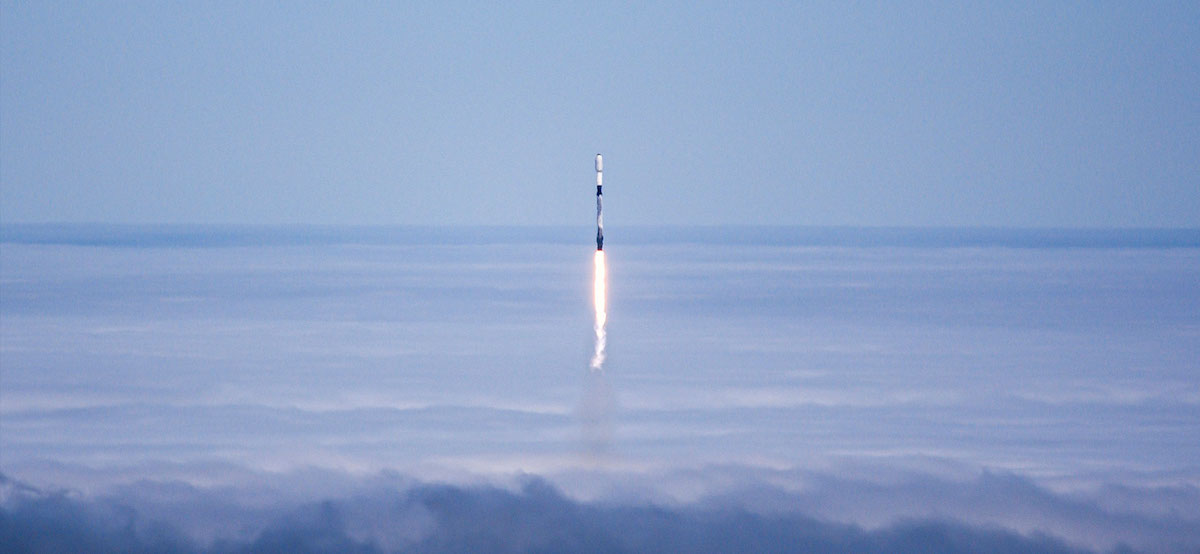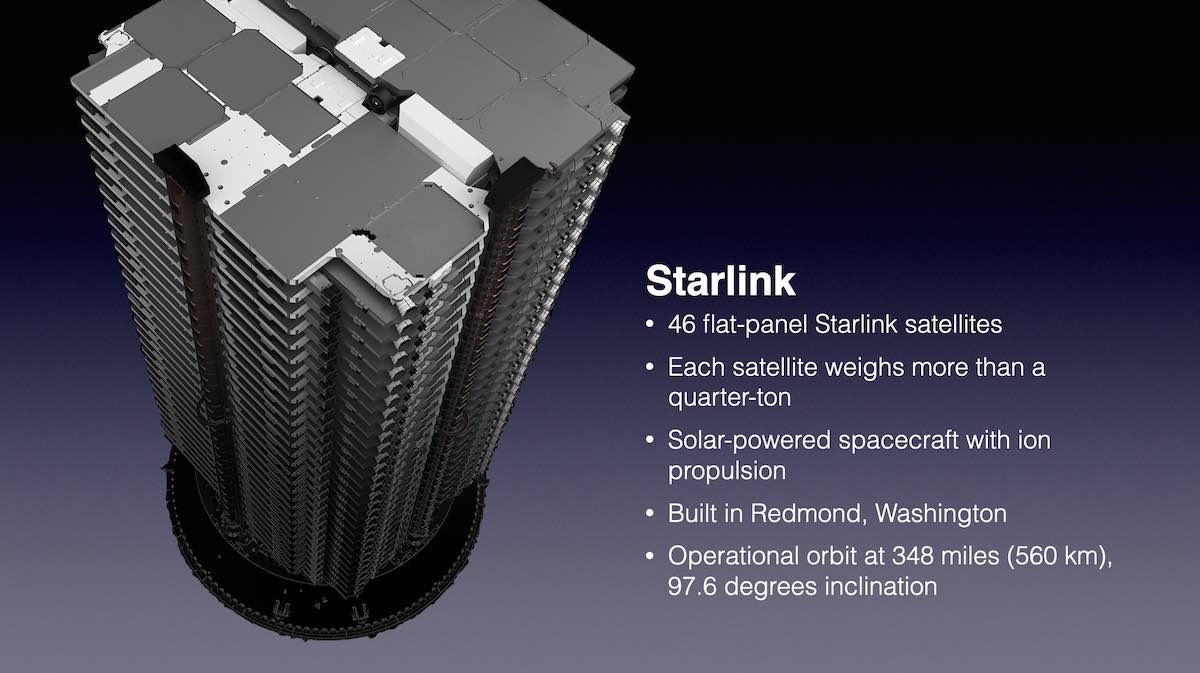
With 2022 barely half over, SpaceX launched its 32nd mission of the year Friday from California’s Central Coast, breaking the company’s record for most launches in a year and delivering 46 more Starlink internet satellites into polar orbit to provide global broadband service.
A Falcon 9 rocket lifted off from Space Launch Complex 4-East at Vandenberg Space Force Base at 10:39:40 a.m. PDT (1:39:40 p.m. EDT; 1739:40 GMT). Nine Merlin 1D engines powered up to full throttle, generating 1.7 million pounds of thrust as the Falcon 9 climbed through a fog layer blanketing the West Coast spaceport about 140 miles (225 kilometers) northwest of Los Angeles.
The 229-foot-tall (70-meter) Falcon 9 rocket steered south from Vandenberg, heading for a polar orbit nearly 200 miles (about 310 kilometers) above Earth.
The rocket shut down its nine kerosene-fueled main engines and released the booster about two-and-a-half minutes into the mission, allowing the upper stage to continue into orbit with its single engine. The 15-story-tall booster followed an arcing parabolic trajectory, re-entered the atmosphere, and landed vertically on a SpaceX drone ship parked in the Pacific Ocean about 400 miles downrange from Vandenberg.
The recovery marked the 132nd landing of a SpaceX Falcon rocket booster after an orbital launch. It was the fourth flight for this booster, tail number B1071, which debuted in February and has exclusively launched from Vandenberg.
With 32 missions in the books for 2022, SpaceX is on pace for nearly 60 Falcon 9 launches this year, nearly double the number accomplished in 2021. SpaceX has launched more successful missions into orbit so far this year than the combined efforts of any other nation, and the company is far outpacing its chief competitors in the commercial marketplace.
United Launch Alliance, a rival in the competition for U.S. military launch business, has successfully launched four times this year. Arianespace, the European commercial launch company, has accomplished three missions so far in 2021.
SpaceX said its first 31 missions of the year delivered around 351 metric tons (about 774,000 pounds) of payload mass into orbit. The flights have carried astronauts to the International Space Station, launched hundreds of small satellites for the Starlink network and customer fleets, and deployed national security payloads for the U.S. government’s spy satellite agency.
Friday’s mission also broke the record for the shortest span between SpaceX launches from the West Coast spaceport, reducing the turnaround time from 23 days to 12 days. SpaceX’s previous flight from Vandenberg occurred July 10 with an earlier batch of Starlink internet satellites.
The launch Friday, designated Starlink 3-2, was the seventh SpaceX mission from Vandenberg this year.
SpaceX attempted to launch the Starlink 3-2 mission Thursday, but the Falcon 9’s on-board computer automatically stopped the countdown at T-minus 46 seconds after detecting an “of-nominal reading” from one off the rocket’s Merlin 1D engines, said Kate Tice, a SpaceX engineer and commentator on the company’s launch webcast.
“The flight computer saw an out of limits reading on a backup valve position within the first stage propulsion system, and this reading caused an automatic hold on the countdown,” Tice said.
SpaceX engineers investigated and resolved the issue, clearing the way for Friday’s liftoff. It was the first abort of a Falcon 9 terminal countdown for technical reasons since December 2020.

The 46 Starlink satellites launch Friday into one of five orbital “shells” in SpaceX’s internet constellation. The previous Falcon 9 launch from Vandenberg on July 10 was the first dedicated Starlink mission heading for one of the network’s two polar orbit shells. SpaceX has previously launched satellites into the other three shells at inclinations of 53.0 degrees, 53.2 degrees, and 70 degrees to the equator.
Deployment of the Starlink satellites from the Falcon 9’s upper stage occurred about 63 minutes after liftoff. Four retention rods jettisoned to allow the flat-packed Starlink satellites to fly free of the rocket.
After separating from the Falcon 9, the Starlink satellites were expected to disperse and extend solar panels to begin generating electricity to recharge their batteries. The satellites will go through an automated checkout and activation sequence, then use krypton-fueled ion thrusters to raise their altitude to 348 miles (560 kilometers), where they will enter operational service in the Starlink network.
The Starlink satellites each weigh more than a quarter-ton, and are built on SpaceX’s Starlink assembly line in Redmond, Washington. The spacecraft are fitted with laser inter-satellite links to facilitate data transfers in orbit, without needing to relay signals through ground stations, which come with geographical, and sometimes political, constraints. Laser crosslinks can also reduce latency in the Starlink network because signals need to travel a shorter distance.
SpaceX’s Starlink network provides low-latency broadband internet service to consumers around the world. SpaceX said Friday the Starlink service is currently available in 36 countries, or 41 individual markets.
The fleet is the largest constellation of satellites in orbit, with 2,141 Starlink spacecraft currently in service, and 358 more satellites raising their orbits or drifting into their operational positions in the network, according to a tabulation by Jonathan McDowell, an astrophysicist and expert tracker of spaceflight activity.
The 46 new satellites launched Friday brought the total number of Starlink spacecraft deployed to date to 2,904.
SpaceX plans to launch the next batch of Starlink satellites from the Kennedy Space Center in Florida on a Falcon 9 rocket Sunday. Another Starlink launch from Vandenberg is scheduled for early August.
Email the author.
Follow Stephen Clark on Twitter: @StephenClark1.
